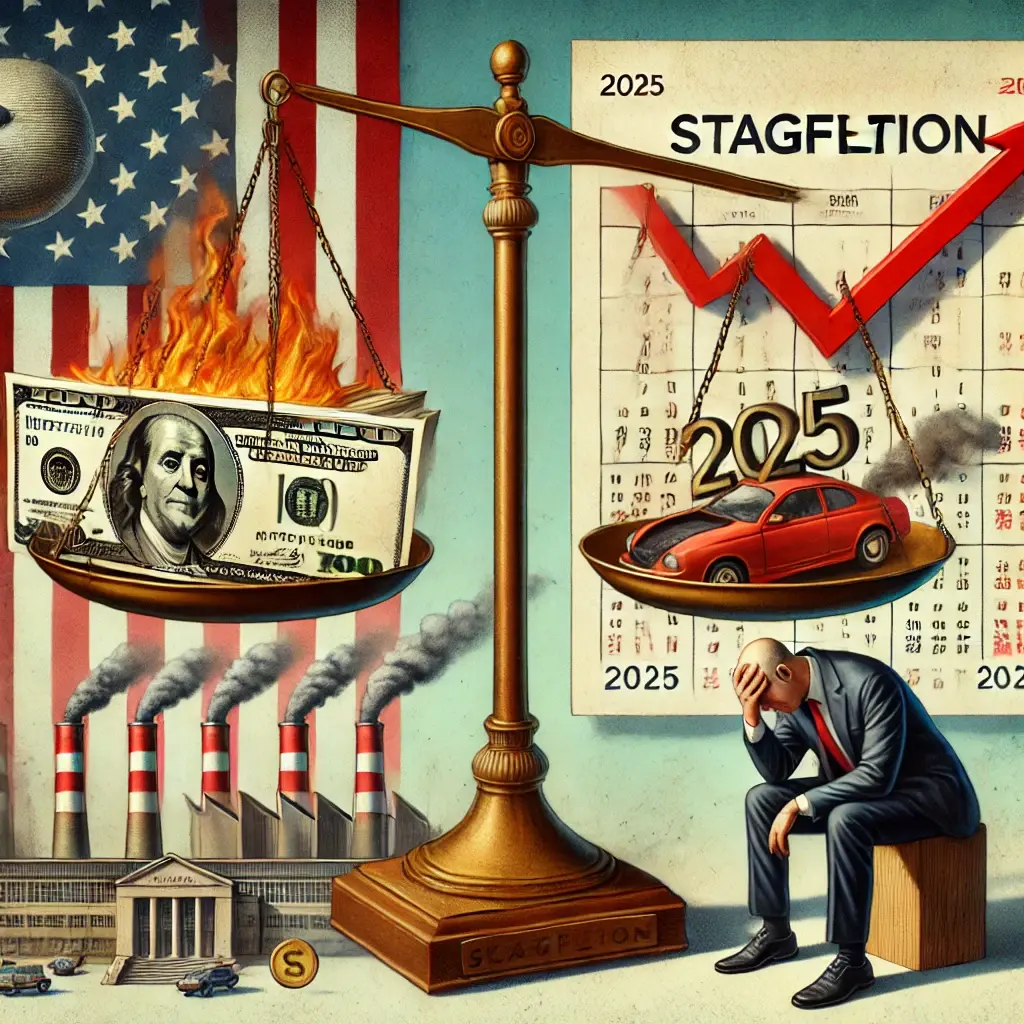
Stagflation—an economic condition characterized by slow growth, high inflation, and rising unemployment—has long been a theoretical concern for the U.S. economy. However, recent economic data suggests that stagflation risks are no longer just hypothetical. While the situation is not as severe as the 1970s, worrying trends in inflation, economic growth, and employment indicate that the U.S. may be heading towards a stagflationary environment.
Inflation on the Rise
1)Inflation in the U.S. is once again picking up after months of moderation.
2)U.S. consumer price inflation reached 3% year-on-year in January 2025.
3)Energy prices rose for the first time in five months, adding pressure on household budgets.
4)Food price inflation surged to its highest level in a year, straining consumers further.
Although inflation remains below the extreme levels of 2022, the recent uptick raises concerns about persistent price pressures, making it harder for the Federal Reserve to cut interest rates.
Economic Growth is Slowing Down
While inflation is rising, economic growth is showing signs of fatigue:
1)The U.S. economy expanded at an annualized 2.3% in Q4 2024, slowing down from 3.1% in Q3.
2)This was the slowest growth rate in three quarters.
3)The Economic Activity Index for the U.S. dropped to its lowest level since April 2024.
4)A slowing economy, combined with persistent inflation, is a classic recipe for stagflation.
What About Unemployment?
One key element of stagflation—rising unemployment—is not yet fully visible but is beginning to show early warning signs:
1)The U.S. unemployment rate remains low at around 4%, which is not alarming.
2)However, job growth has slowed down in recent months.
3)Weekly unemployment claims hit 242,000 (as of February 22, 2025), the highest in three months, indicating potential labor market softening.
While unemployment is still relatively low, if economic growth continues to slow and inflation remains high, job losses could accelerate, increasing the risk of a full-blown stagflationary crisis.
Lessons from the 1970s
The last major period of stagflation in the U.S. occurred in the 1970s.
1)Inflation surged to 12.2% in 1974.
2)Unemployment climbed to 8.75% in 1975.
The combination of supply shocks, weak growth, and aggressive Federal Reserve policies created an economic nightmare.
Today, the U.S. is far from that scenario, but the risk factors—rising prices, slowing growth, and early signs of labor market weakening—suggest that policymakers must tread carefully to avoid history repeating itself.
While the U.S. is not yet in a full-blown stagflationary crisis, the warning signs are becoming more evident. Inflation is picking up, economic growth is decelerating, and job growth is weakening. If these trends persist, the U.S. could find itself in a difficult economic situation where high inflation and slow growth make it challenging for policymakers to navigate.
For now, the situation remains uncertain, but the risks of stagflation are real. The coming months will be crucial in determining whether the U.S. can avoid this dangerous economic trap or if it is indeed heading toward a stagflationary environment.
Disclaimer
The information provided in this article is for informational purposes only and should not be construed as financial or economic advice. The views expressed are based on available data and current economic trends, which may change over time. Readers should conduct their own research and consult with a financial professional before making any investment or economic decisions .




